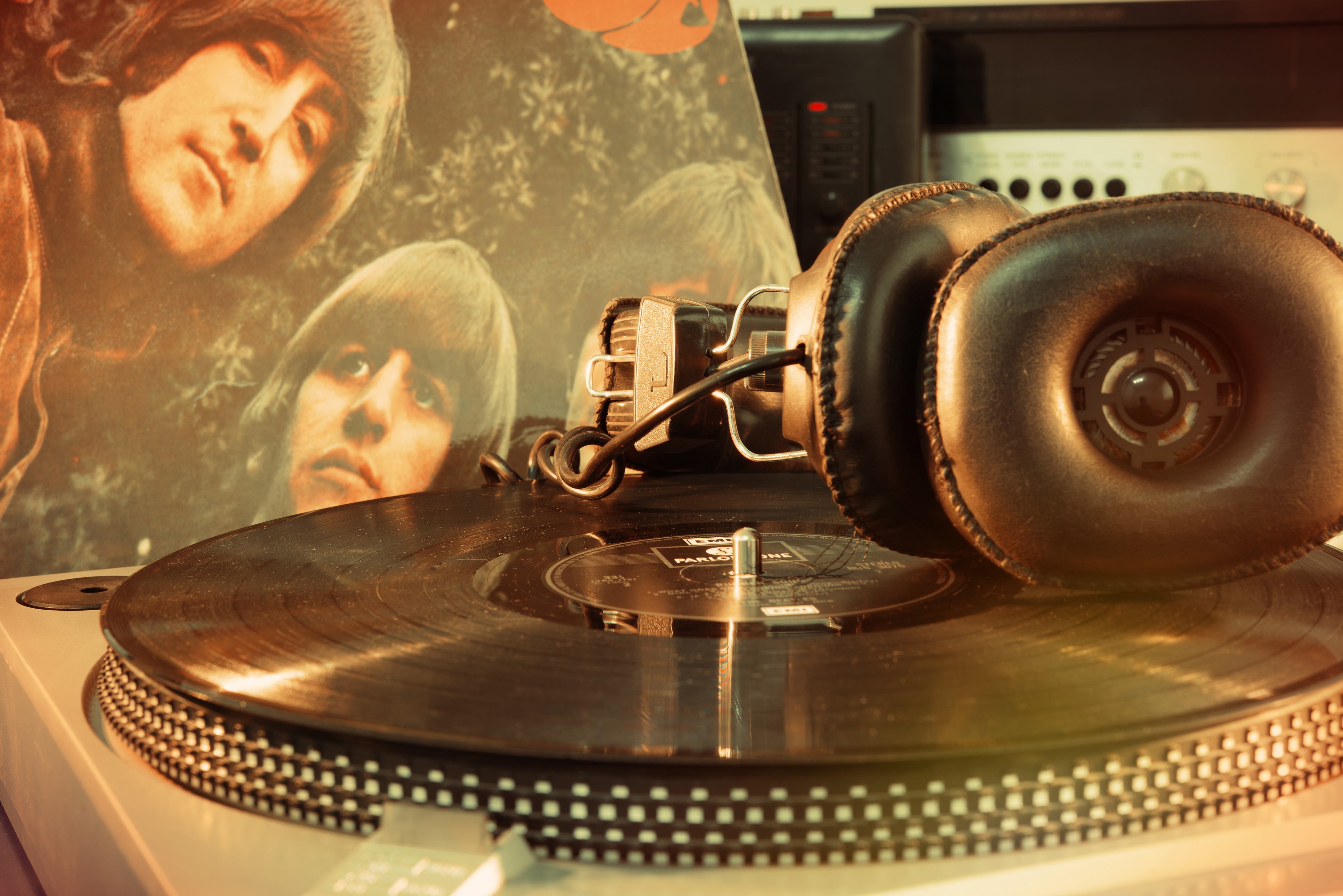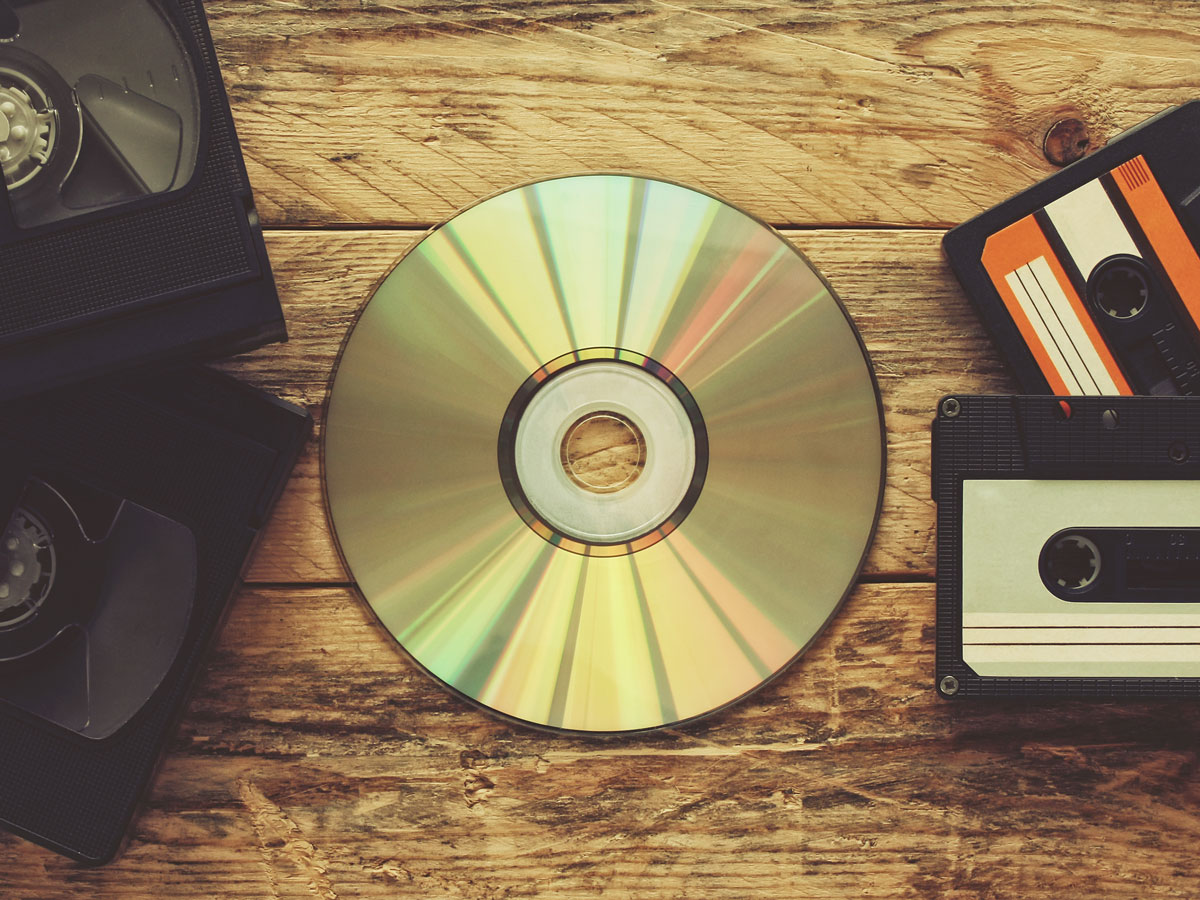Musikträger
Aktueller Hinweis:
Wie wir bereits im Vorfeld informierten, haben wir zum 01.07.2025 die letzte reguläre Ausschüttung der Sparten Phono VR und BT VR durchgeführt. Die nächste Ausschüttung erfolgt dann in den neuen Sparten MT VR und GT VR. Geplant ist das 04. Quartal 2026.
Diese Änderung geht aus der Neuregelung des Bereichs Vervielfältigung und Verbreitung für Trägermedien hervor, die mit Antrag 23 in der Mitgliederversammlung 2024 beschlossen wurde.
Den konkreten Ausschüttungstermin für MT VR und GT VR werden wir voraussichtlich im Frühjahr 2026 bekannt geben. Wie immer informieren wir Sie regelmäßig über alle Neuigkeiten hier auf gema.de.

Steckbrief Musikträger
Wie die Gelder verteilt werden:
Tonträger und Bildtonträger

Die Musik erklingt. Aber ohne Musiker/-innen oder Sänger/-innen.
Im Herbst 1887 erklang zum ersten Mal Musik aus einem Holzkasten mit einem trichterförmigen Aufsatz. Zum großen Erstaunen der Anwesenden, denn in dem Kasten versteckten sich keine Musiker/-innen oder Sänger/-innen. Bis dahin war es die einzige Möglichkeit, Musik zum Erklingen zu bringen. Das Grammophon war erfunden und mit ihm die sogenannte „mechanische Wiedergabe“ von Musik.
Die Wiedergabe von Musik auf einem Tonträger durch technische Geräte war von da an eine Erfolgsgeschichte: Von der Schellackplatte zum Vinyl, von der Kassette zur CD, das Medium wechselte im Laufe der Zeit vielfach, geblieben ist die Freude, Musik in den eigenen vier Wänden zu hören, sie schlicht physisch „zu besitzen“ und die entsprechenden Tonträger zu sammeln. Trotz Streaming und Digitalisierung feiert beispielsweise Vinyl ein Comeback. Tonträger bleiben damit weiterhin eine relevante Einnahmequelle für unsere Mitglieder.
Die Sparte Tonträger Vervielfältigungsrecht (Phono VR) einfach erklärt
Der Name Phono VR geht zurück auf den Phonographen: einem Gerät zur Aufzeichnung und damit Vervielfältigung von Musik. In dieser Sparte erhalten Sie Ausschüttungen, wenn Ihre Werke mechanisch vervielfältigt und auf Tonträgern verbreitet werden, z.B. auf CDs, Vinyls oder Kassetten.
Damit die Musiker/-innen für die Vervielfältigung ihrer Werke vergütet werden können, müssen Tonträger mit Musik durch die Hersteller/-innen bei uns gemeldet und durch die GEMA lizensiert werden.
Im Abgleich der Meldungen von den Tonträgerhersteller/-innen mit den durch die Urheber/-innen oder Verlage angemeldeten Musikwerken, können wir die Tantiemen direkt an die Musikschaffenden und Verlage auszahlen.
Zusätzlich schütten wir in dieser Sparte Einnahmen für Nutzungen von Tonträgern aus, für die wir keine Nutzungsmeldungen erhalten, z.B. für den Verleih von Tonträgern in Bibliotheken oder für erlaubte private Vervielfältigungen. Diese bekommen Sie als Zuschlag on top auf die Einnahmen für die Vervielfältigung Ihrer Werke.


Die Sparte Bildtonträger Vervielfältigungsrecht (BT VR) einfach erklärt
Wie der Name verrät, enthalten Bildtonträger Bild und Ton. Darunter fallen beispielsweise DVDs und Blu-rays. Analog zu den Tonträgern erhält die GEMA auch Tantiemen für die Vervielfältigung und Verbreitung von Musik (z.B. Filmmusik) auf Bildtonträgern. Diese Einnahmen können wir in der Sparte BT VR ebenfalls direkt an die Musikschaffenden und Verlage verteilen.
Tonträger und Bildtonträger auf einen Blick
So teilen sich die Sparten auf:
In der Sparte Phono VR schütten wir Einnahmen für die Vervielfältigung und Verbreitung von Musik auf Tonträgern (CD, Vinyl, Kassette etc.) aus. In der Sparte BT VR erhalten die Rechteinhaber/-innen Tantiemen für die Vervielfältigung und Verbreitung von Musik auf Bildtonträgern (DVD, Blu-ray etc.).
Woher die Einnahmen kommen:
Wer einen Tonträger oder einen Bildtonträger vervielfältigen bzw. verbreiten möchte, braucht dafür eine Lizenz. Mit dieser Lizenz wird das Recht erworben, ein oder mehrere Werke auf einem Trägermedium zu vervielfältigen und zu verbreiten.
Welche Nutzungsinformationen herangezogen werden:
Wer eine Lizenz zur Vervielfältigung und Verbreitung erwerben will, muss eine Meldung bei der GEMA einreichen und dabei die Werke und ihre Länge angeben – unsere Grundlage für die direkte Verteilung.
Wie die Gelder verteilt werden:
Der Großteil wird – mithilfe der Meldungen der Lizenznehmenden zu ihren Produktionen – direkt an die Rechteinhaber/-innen der Werke verteilt. Alle Einnahmen pro CD und Titel unter 1 Euro verteilen wir als prozentualen Zuschlag.
Wichtige Termine und Fristen für Sie
Werke rechtzeitig anmelden:
Wir empfehlen die Werkanmeldung rechtzeitig über unser Onlineportal vorzunehmen, jedoch spätestens mit der Veröffentlichung. Nur dann kann das Werk nach dem Verteilungsplan der GEMA bei einer Ausschüttung berücksichtigt werden. Frist für Vervielfältigungen Ihrer Werke zwischen 01. Januar und 30. Juni ist der 31. Juli. Für Vervielfältigungen zwischen 01. Juli und 31. Dezember gilt der 31. Januar des Folgejahres als letztmöglicher Anmeldetag, um bei der nächsten Ausschüttung berücksichtigt zu werden.
Verteilungsturnus pro Jahr:
Die Hauptausschüttungen für Phono VR und BT VR sind jährlich zum 01. Januar und zum 01. Juli. Für Phono VR finden zudem zum 01. April und zum 01. Juli Überhangsausschüttungen statt. Mehr unter: Ausschüttungstermine & Fristen/Tonträger und Bildtonträger.
Rechtzeitig reklamieren:
Nach dem jeweiligen Ausschüttungstermin haben Sie drei Monate Zeit für die Reklamation. Wie das geht und was Sie dafür wissen müssen, erfahren Sie unter Reklamationen.